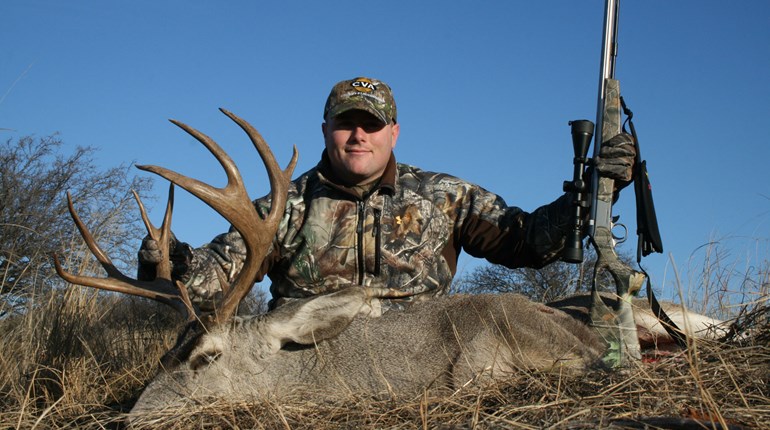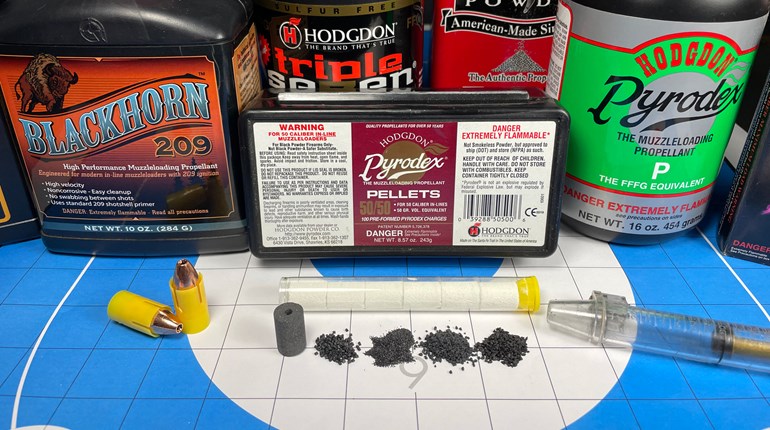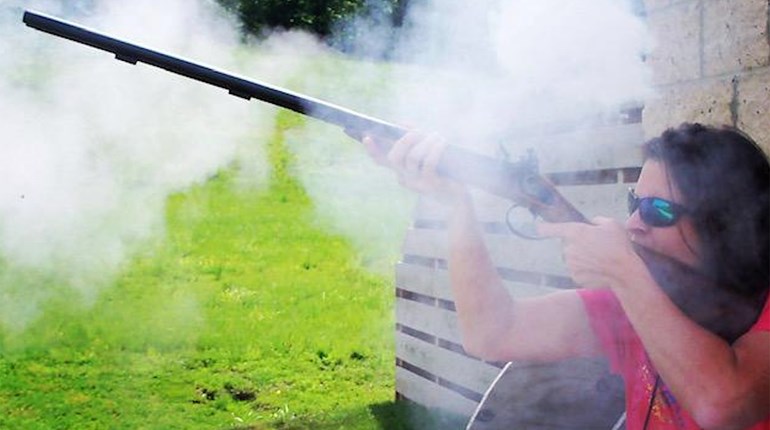
When it comes to modern hunting, one method can make you feel like you’ve gone back in time: muzzleloading. Anyone who’s shot a muzzleloader knows the thick smoke, plume of fire, and all of the “special effects” that make this type of hunting—and practice—so thrilling. Seeing the process in person, and making it happen, is far better than watching an old black-and-white Daniel Boone movie. The great news is that using a muzzleloader opens up many more hunting opportunities for the savvy hunter.
You could argue that the most popular prey in America is the whitetail deer. Numerous states host special muzzleloading-firearms-only hunting seasons. Best of all, these seasons are held when bucks are at their most active.
This pursuit requires precision. You must study the rifle and bullet, then measure the blackpowder precisely. Next, loading is a step-by-step process requiring that you pour in the powder—or drop in pellets—wrap the ball or bullet with a patch or sabot, and then press the bullet into the barrel’s muzzle. With some effort and a ramrod, you next push the bullet far down into the barrel and seat it against the powder charge. Next, apply a piece of flint to the arm, or a percussion cap to the nipple in the ignition system, and it’s finally time to tug the trigger.
Meeting the Challenge
“I think this type of hunting is all about the excitement,” states Nathan Brittian, an 11-year-old hunter from western North Carolina. “After you pull the trigger, there’s smoke everywhere. It’s like hunting in a fog, and your adrenaline is really pumping.” Nathan was hunting after school with his dad and uncle in a ground blind when a doe appeared nearby. Nathan steadied his .50-caliber muzzleloader and killed the deer—his first—with one well-aimed shot.
Muzzleloaders teach you many important hunting skills—and can possibly make you a better hunter. Hunting with a muzzleloader is definitely more technical than simply dropping a cartridge into a regular rifle and pulling the trigger. You’ll need to learn details about ballistics, barrel bores, blackpowder and bullets. You’ll better understand the science required to send a projectile—your bullet—into flight. Another factor some hunters find thrilling is determining what amount of powder is required to push that bullet to hit the bullseye. Attention to detail can translate into a filled deer tag.
You must also overcome weather. Rain and snow can possibly dampen components and possibly cause a muzzleloader to not ignite and fire.
Ultimately, hunting with a muzzleloader teaches two very important skills to hunters—accuracy and patience. You will learn to aim carefully since a lot is riding on that first shot. In most hunting situations the standard is “one shot, one kill.” There’s rarely an opportunity to reload and correct a mistake, because reloading can take considerable time, even with practice.
The Method
The process of loading and firing a muzzleloader is best accomplished by first cleaning the muzzleloader. To start this process, remove any flint or primer and make sure the firearm is unloaded. Then simply drop the ramrod into the barrel. A metal ringing sound means the barrel is empty. If there’s a low thud, your muzzleloader could be loaded. If you have questions, ask a knowledgeable adult or gunsmith to help you with this process.
To unload a loaded muzzleloader, most hunters simply set the ignition system (apply flint or a percussion cap) and fire the bullet into a safe backstop. (Warning: Do not shoot the bullet up into the air.) There are also air pressure systems and worm-screws for removing bullets from a loaded firearm. With modern in-line muzzleloaders, another way to unload is to disassemble the muzzleloader by removing the rear breech plug and then using the ramrod to push the bullet out the rear of the opened barrel.
Proper cleaning is also key to making the rifle easy to load. You must first ensure that the foaming cleaners and liquid solutions you wish to use are designed to remove built-up deposits of burnt blackpowder from within the barrel. When cleaning, it is always best to place a small plastic trash bag or empty plastic milk jug over the end of the barrel to catch dirty patches and blackpowder particles as they fall.
Before reassembling some components, like the breech plug for an in-line model, you’ll need to grease any threaded parts. This permits easy disassembly the next time you need to clean or unload the muzzleloader.
Today, nearly every model of muzzleloader designed for hunting is chambered or available in .50 caliber. Visit your state’s game department website for the muzzleloader regulations in your region, since some places do not permit riflescopes or certain models of muzzleloaders.
Top Tactics For the Shot
Today, most blackpowder hunters use premeasured and pressed powder that is available as pellets. These pellets are easy to control and load—and some of these products burn cleaner than standard blackpowder. This makes clean-up after a hunt, or reloading while afield, much easier. (Warning: NEVER use regular gunpowder in a blackpowder rifle.)
Before going hunting or shooting, it’s best to pre-measure and pre-load rounds and powder/pellets into small tubular speedloaders that are specially made for this process. Once you have all of the bullets, powder and primers assembled in ready-to-load packets, you should place these in a sealable baggie, then place that into a pocket where it can be easily accessed. This creates an easy-to-load system when you are hunting.
Gearing Up
The good news is that going deer hunting with a muzzleloader has become a more “modern” process. There are several manufacturers that offer youth models of muzzleloading rifles for those with smaller frames and arms. The better news is that several of these rifles are sold in “ready-to-hunt” packages complete with the rifle, a scope and bullets. The buyer only needs to obtain powder and load up.
There’s more good news: More and more muzzleloading manufacturers are designing rifles sized to fit smaller-statured people (and your InSights magazine is here to tell you about them!). After you find a muzzleloader that fits you and practice at a range, it’s time to hunt like Nathan Brittain did. You’ll also discover the thrill.
“There was a humongous amount of smoke after I shot my deer,” exclaimed Nathan. “I was waving and trying to get all the smoke out of the way so I could see where the deer went. My heart was pounding.”
He found his deer only 30 yards away—dead.







































